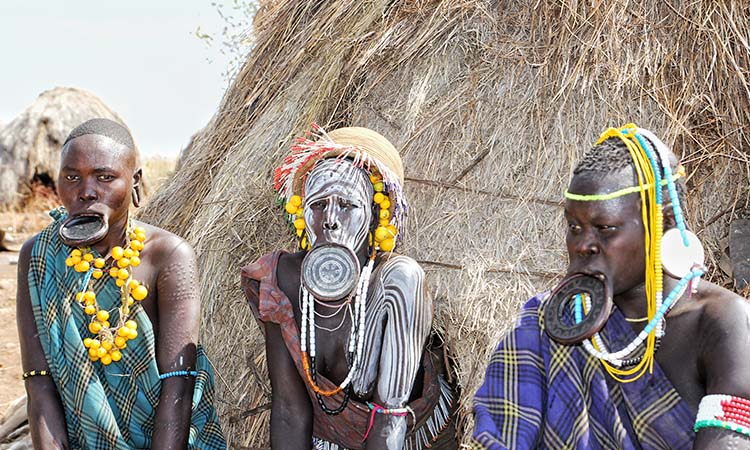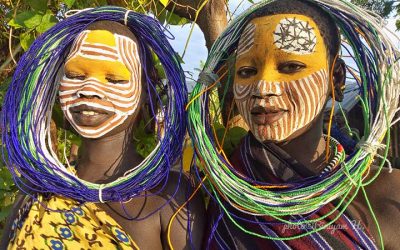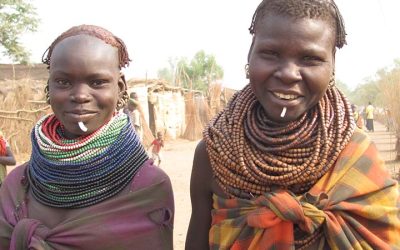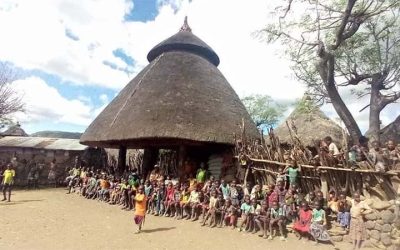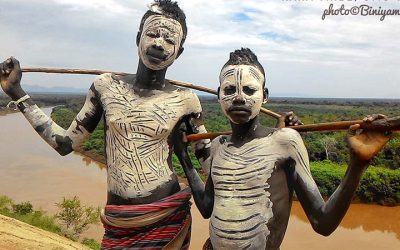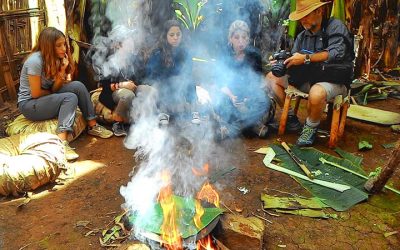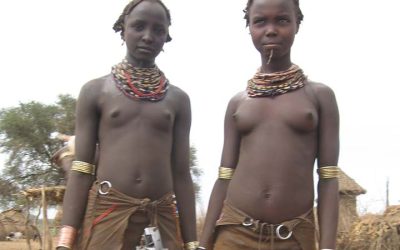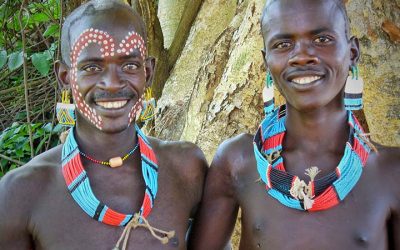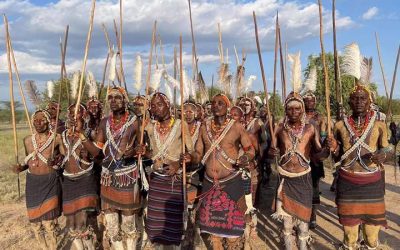Mursi Tribe
Pertaining to the Nilo-Saharan linguistic group (subgroup East-Sudanic), the Mursi are pastoralists and cultivators. The large Surma group consists of the Mursi (about 11,000 individuals), the Chai (about 11,000 individuals) and the Tirma (about 9,000 individuals), who are strongly related to the Meen (Bodi) and Murle, as well as a very little known group, the Bale. In the 1960s, an outbreak of anthrax destroyed a large part of the livestock of the Surmic groups. They have since pursued agriculture, although their culture is still connected to the keeping of livestock.
Facts about the Mursi tribe:
1. Lip plates
Lips plates are worn by mostly women to signify their status as single or married. A young unmarried girl will have her lip cut and held open by a wooden plug until she reaches the age of 15 or 16. It is up to the individual to pick lip plate size, but it’s assumed that the larger the lip plate, the more bride-wealth the female has.
2. Religion
The Mursi people believe in a higher force that they call Tumwi. This force is believed to be a figure in the sky, often a rainbow or a bird. Their religion is often classified as animism.
3. Komoru
A Komoru is a high priest in the Mursi tribe, who often acts as a direct communicator between the people and Tumwi. He conducts rituals to bring rain, fight disease and protect from attacks by other clans.
4. Language
The Mursi dialect is classified as “Surmic” within the Eastern Sudanic branch of Nilo-Saharan “super family.” The Mursi people are increasingly becoming multi-lingual, accepting Bench (the official language of Ethiopia) as a first or second language. It was not until recently that Mursi became a written language.
5. Homes
The Mursi live in huts called doris that each house several family members.
6. Dueling
Single Mursi men partake in a ceremonial dueling (donga) using wooden poles, and fight each other to prove their masculinity. The fight will continue until one of the men is defeated by keeling over from broken bones or other bad wounds. This fight is often ritualized to impress unmarried women and prove a man’s worth as a husband.
7. Age status
In Mursi clans, age plays a significant role in identifying the status of each individual. Married women have the same age status as their husbands, and some men do not get labeled as an adult even though they may have reached maturity years ago. Elders become the “police” of the clans and often punish or watch over their people.
8. Agriculture
Mursi people rely heavily on cattle for meat and milk. They also harvest sorghum, maize, chick peas, and beans. Unfortunately, the Mursi people often face drought, which weakens their crops and cattle herds.
9. Clans
There are 18 different Mursi clans residing in Omo. It’s considered taboo to marry into another clan. Each clan slightly differs in attire, rules, and clans are not always friendly to each other.
10. Dowry
During every marriage ceremony, it’s ideal for the bride’s family to hand over up to 38 cattle to the groom’s family.
11. Healing
Often the priest (komoru) or a healer (nana) will play a role in healing a sick or wounded person. Open wounds may be treated with herbs, and healers may perform a dance for an ill person. Female healers often will rub their hands against the sick person repeatedly to “cast out” the sickness, or will wipe the person down with gourds, coffee or clay.

